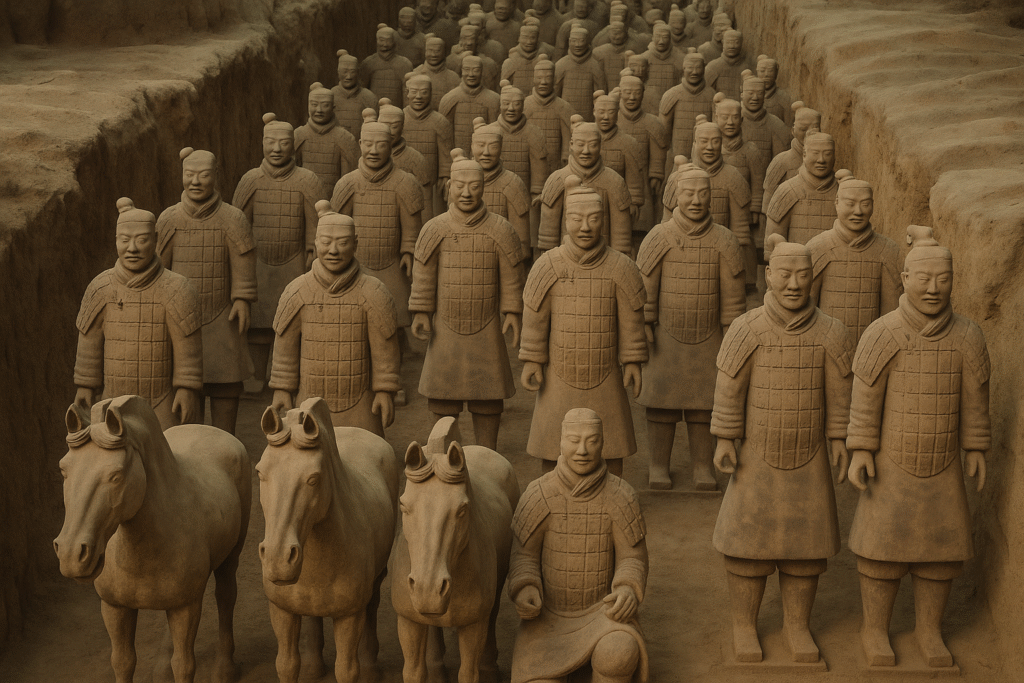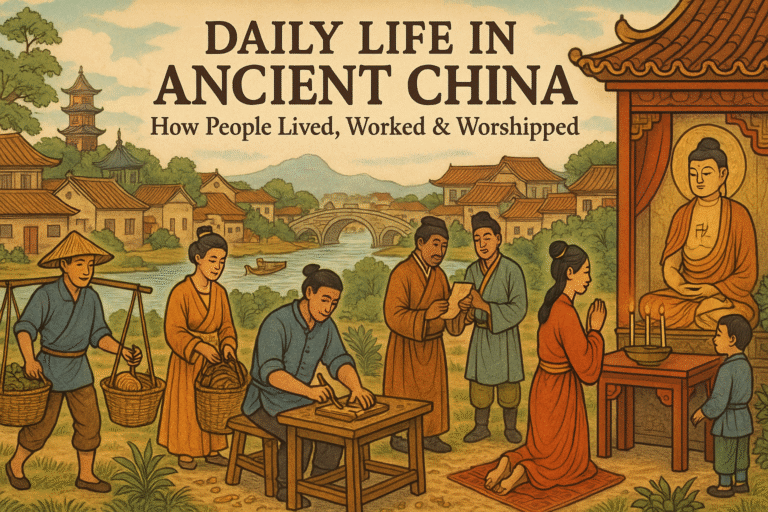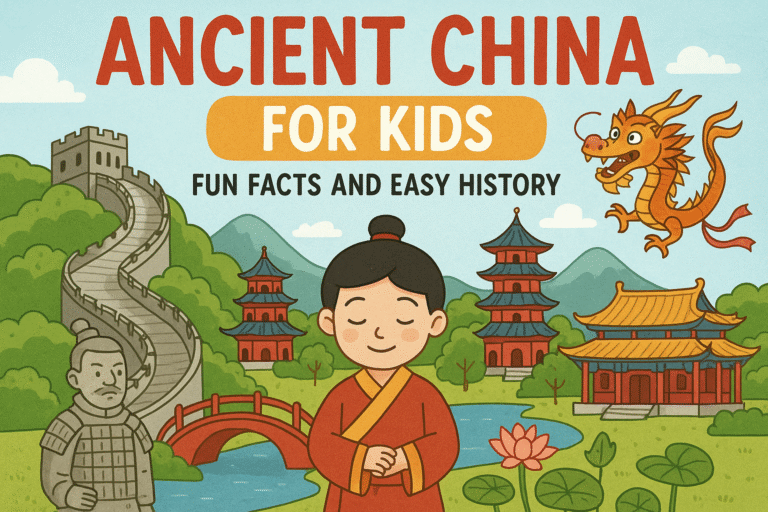<meta name='impact-site-verification' value='34369dc5-877c-4282-90a9-36f86721ccfa'>
The Complete Guide to Ancient China: A Journey Through History and Legacy
The history of ancient China spans over 4,000 years, representing one of the world’s longest continuous civilizations. From the earliest recorded dynasties to the fall of imperial rule, ancient China developed sophisticated governmental systems, revolutionary technologies, and enduring philosophical traditions that continue to influence modern society.
This comprehensive examination of ancient Chinese civilization will explore the geographical foundations that shaped its development, the dynasties that defined its political evolution, and the cultural innovations that established China as a dominant force in world history. Understanding the history of ancient China provides essential context for comprehending not only East Asian development but also the broader patterns of human civilization.
The legacy of ancient China extends far beyond its borders, having contributed fundamental innovations in governance, technology, philosophy, and art that spread throughout Asia and eventually reached the Western world. These contributions established foundations for modern administrative systems, scientific advancement, and cultural expression that remain relevant today.
Geographical Context and Its Influence
The geographical features of ancient China played a fundamental role in shaping its civilization and isolating it from external influences for millennia. The Yellow River (Huang He) and Yangtze River served as the primary arteries of ancient Chinese civilization, providing fertile soil for agriculture and transportation networks that enabled the development of complex societies.
The Yellow River, often called the “cradle of Chinese civilization,” flows through the North China Plain, depositing nutrient-rich silt that created ideal conditions for early agricultural development. This river system supported the emergence of China’s first recorded dynasties and established the agricultural foundation upon which Chinese civilization was built.
The Yangtze River, China’s longest waterway, provided similar benefits in southern China, supporting rice cultivation and enabling the development of distinct regional cultures that would later be unified under imperial rule. The river systems created natural highways for trade and communication, facilitating the exchange of goods, ideas, and technologies across vast distances.
Natural barriers significantly influenced ancient China’s development by creating a relatively isolated environment that allowed Chinese civilization to develop distinctive characteristics. The Himalayas to the southwest, the Gobi Desert to the north, and the Pacific Ocean to the east created formidable obstacles to invasion and cultural exchange, contributing to China’s perception of itself as the “Middle Kingdom” surrounded by barbarian lands.
These geographical features necessitated the development of advanced engineering techniques for water management, including irrigation systems, flood control measures, and canal construction. The mastery of hydraulic engineering became a cornerstone of Chinese administrative capability and contributed to the centralization of political power.
Dynasties of Ancient China: Overview and Key Achievements
The dynastic system defined political organization in ancient China for over two millennia, with each dynasty contributing unique innovations and achievements to Chinese civilization. The concept of the Mandate of Heaven provided legitimacy for dynastic rule, establishing the principle that rulers governed through divine approval that could be withdrawn if they failed to govern effectively.
The Qin Dynasty (221-206 BCE)
The Qin Dynasty achieved the first unification of China under Emperor Qin Shi Huang, establishing standardized systems that would define Chinese civilization for centuries. The dynasty implemented uniform currency, writing systems, and measurements across its territory, creating the administrative foundation for imperial rule.
Qin Shi Huang’s construction of the Great Wall represented a massive undertaking that connected and extended existing defensive fortifications into a unified barrier against northern invasions. The dynasty also established the first centralized bureaucratic system, replacing feudal governance with appointed officials responsible to the imperial court.
The Qin Dynasty’s legalist philosophy emphasized strict laws and harsh punishments as means of maintaining social order. This approach, while effective for unification, contributed to the dynasty’s rapid collapse due to popular resentment and administrative overreach.
The Han Dynasty (206 BCE – 220 CE)
The Han Dynasty represented the golden age of ancient China, establishing governmental and cultural systems that would influence Chinese civilization for millennia. The dynasty adopted Confucian principles as the foundation of governmental administration, creating a merit-based bureaucracy selected through examination systems.
Han expansion extended Chinese territory significantly, establishing control over much of modern-day China and initiating regular contact with Central Asian civilizations. The dynasty’s military campaigns secured trade routes that would later develop into the Silk Road, facilitating cultural and economic exchange with distant civilizations.
The Han period witnessed significant technological advancement, including the invention of paper, the development of advanced metallurgy, and innovations in astronomy and mathematics. These achievements established China as the world’s most technologically advanced civilization during this period.
The Tang Dynasty (618-907 CE)
The Tang Dynasty represented the height of ancient Chinese cultural prosperity and international influence. Chang’an, the Tang capital, became the world’s largest city, hosting diplomatic missions and merchants from across Asia and establishing China as the center of East Asian civilization.
Tang cultural achievements included the flourishing of poetry, painting, and sculpture, with poets like Li Bai and Du Fu creating works that remain central to Chinese literary tradition. The dynasty’s cosmopolitan character facilitated the exchange of ideas and artistic techniques with neighboring civilizations.
The Tang period witnessed the expansion of Buddhism in China, with the construction of elaborate temples and the development of distinctly Chinese forms of Buddhist practice. This religious development contributed to the dynasty’s cultural richness and philosophical sophistication.
Cultural Contributions: Philosophy, Art, and Science
Ancient China’s cultural contributions fundamentally shaped world civilization, establishing philosophical systems, artistic traditions, and scientific innovations that continue to influence modern society. The development of Confucianism and Taoism provided ethical frameworks that extended far beyond China’s borders.
Philosophical Traditions
Confucianism, developed by Kong Qiu (Confucius) during the Spring and Autumn period, established principles of social harmony, governmental responsibility, and individual cultivation that became central to Chinese culture. The philosophy emphasized education, moral development, and social relationships as foundations for effective governance and personal fulfillment.
Taoism, attributed to Laozi, presented an alternative philosophical approach emphasizing natural harmony, simplicity, and the principle of wu wei (non-action). This philosophy influenced Chinese art, literature, and scientific thinking by promoting observation of natural patterns and acceptance of change as fundamental aspects of existence.
Artistic Achievements
Chinese calligraphy developed as both an art form and a means of cultural expression, with different styles reflecting historical periods and individual artistic vision. The practice of calligraphy became essential to Chinese education and cultural identity, representing the integration of aesthetic beauty with intellectual expression.
Porcelain production reached extraordinary levels of sophistication during various dynasties, with Chinese ceramics becoming highly prized throughout Asia and eventually Europe. The technical mastery required for porcelain production demonstrated Chinese advancement in chemistry, engineering, and artistic design.
Scientific and Technological Innovations
The invention of paper during the Han Dynasty revolutionized information storage and transmission, enabling the development of more sophisticated administrative systems and educational practices. This innovation eventually spread throughout the world, fundamentally changing human communication capabilities.
The development of printing technology during the Tang Dynasty represented another revolutionary advancement, allowing for the mass production of books and the dissemination of knowledge on an unprecedented scale. These innovations established China as a leader in information technology centuries before similar developments occurred elsewhere.
Social Structure and Daily Life
Ancient Chinese society operated according to a hierarchical system that assigned specific roles and responsibilities to different social groups. The emperor occupied the apex of this system, serving as the Son of Heaven with absolute authority over the empire’s governance and the responsibility for maintaining cosmic harmony.
Imperial Administration
The emperor’s authority was exercised through a complex bureaucratic system staffed by scholar-officials who had demonstrated their competence through rigorous examination processes. These examinations tested knowledge of classical texts, poetry, and administrative principles, creating a merit-based system that allowed for social mobility based on educational achievement.
The imperial court maintained elaborate ceremonial practices that reinforced the emperor’s divine mandate and the hierarchical nature of Chinese society. These ceremonies served both religious and political functions, demonstrating the emperor’s role as mediator between heaven and earth.
Social Classes
Scholars occupied the highest social rank below the imperial family, serving as administrators, teachers, and cultural leaders. Their elevated status reflected the Chinese emphasis on education and intellectual achievement as foundations for social advancement and effective governance.
Peasants, who comprised the majority of the population, were officially ranked above merchants and artisans due to their role in agricultural production. Despite their theoretical status, peasants often lived in poverty and were subject to heavy taxation and labor obligations.
Merchants, despite their economic importance, occupied a lower social rank due to Confucian suspicion of profit-seeking activities. However, successful merchants could sometimes achieve higher status through education or strategic marriages with scholar families.
Military Innovations and Warfare
Ancient China developed sophisticated military technologies and strategies that provided significant advantages in warfare and defense. The construction of the Great Wall represented the most ambitious defensive project in human history, extending over 13,000 miles and requiring the labor of millions of workers.

Defensive Systems
The Great Wall incorporated advanced engineering techniques including watchtowers, garrison posts, and communication systems that enabled rapid response to threats. The wall’s construction demonstrated Chinese capabilities in project management, logistics, and engineering on a massive scale.
The wall’s design reflected Chinese understanding of terrain, weather patterns, and military strategy, incorporating natural barriers and strategic positioning to maximize defensive effectiveness. The project’s completion required unprecedented coordination between military and civilian authorities.
Military Technology
Chinese development of the crossbow provided significant advantages in ranged warfare, enabling less-trained soldiers to achieve accuracy comparable to skilled archers. The crossbow’s mechanical advantage and standardized production techniques demonstrated Chinese innovation in military technology.
The creation of the Terracotta Army for Emperor Qin Shi Huang’s tomb illustrated the sophistication of Chinese military organization and artistic achievement. The thousands of individually crafted warriors, horses, and equipment demonstrated advanced techniques in sculpture, metallurgy, and mass production.
The Silk Road and Cultural Exchange
The Silk Road represented one of ancient China’s most significant contributions to world civilization, establishing trade networks that connected China with Central Asia, the Middle East, and eventually Europe. These routes facilitated the exchange of goods, technologies, and ideas across vast distances.
Trade Networks
Chinese silk, porcelain, and tea became highly prized commodities throughout the ancient world, generating wealth that supported further technological and cultural development. The demand for Chinese goods created economic incentives for maintaining and expanding trade routes despite their challenges.
The Silk Road enabled the importation of foreign goods including spices, precious metals, and textiles, enriching Chinese culture and providing access to materials not available domestically. This exchange contributed to the cosmopolitan character of Tang Dynasty culture.
Cultural Exchange
The Silk Road facilitated the transmission of religious ideas, with Buddhism entering China through these routes and eventually becoming a major influence on Chinese culture. The adaptation of Buddhist philosophy to Chinese contexts demonstrated the civilization’s ability to integrate foreign influences while maintaining its distinctive character.
Technological innovations including papermaking, printing, and gunpowder spread westward through Silk Road networks, eventually reaching Europe and contributing to major historical developments including the Renaissance and Age of Exploration.
Decline and Legacy
The decline of ancient China resulted from various factors including internal rebellions, external invasions, and administrative challenges that gradually weakened imperial authority. The Opium Wars of the 19th century marked a significant turning point, demonstrating the technological and military superiority of Western powers.
Imperial Decline
The Qing Dynasty’s inability to respond effectively to Western technological advantages and military pressure led to a series of unequal treaties that reduced Chinese sovereignty and opened the country to foreign influence. These developments marked the end of China’s isolation and traditional governmental systems.
The fall of the Qing Dynasty in 1912 ended over two millennia of imperial rule, marking the conclusion of ancient China and the beginning of modern Chinese history. This transition represented one of the most significant political changes in world history.
Enduring Legacy
Despite political transformation, ancient Chinese cultural achievements continue to influence modern society through philosophical traditions, artistic practices, and technological innovations. Confucian values remain important in East Asian societies, while Chinese artistic traditions continue to evolve and influence global culture.
The governmental innovations of ancient China, including merit-based bureaucracy and centralized administration, influenced political development throughout Asia and provided models for modern administrative systems. These contributions demonstrate the enduring relevance of ancient Chinese achievements.
Ancient China’s Enduring Impact on World Civilization
The history of ancient China reveals a civilization of extraordinary longevity and achievement that fundamentally shaped human development across multiple domains. From technological innovations that revolutionized communication and warfare to philosophical systems that continue to guide human behavior, ancient China’s contributions remain essential to understanding world history.
The geographical factors that initially isolated China eventually enabled it to develop unique solutions to governance, technology, and cultural organization that proved remarkably durable and influential. The dynastic system’s longevity demonstrated the effectiveness of Chinese approaches to political organization and cultural continuity.
Modern scholars and policymakers continue to study ancient Chinese governance, military strategy, and cultural practices for insights applicable to contemporary challenges. The civilization’s ability to maintain cultural continuity while adapting to changing circumstances offers valuable lessons for modern societies facing rapid technological and social change.
The study of ancient China provides essential context for understanding not only modern China but also the broader patterns of human civilization, technological development, and cultural exchange that continue to shape our interconnected world.


I like the helpful information you provide in your articles. I’ll bookmark your weblog and check again here frequently. I’m quite certain I’ll learn plenty of new stuff right here! Good luck for the next!